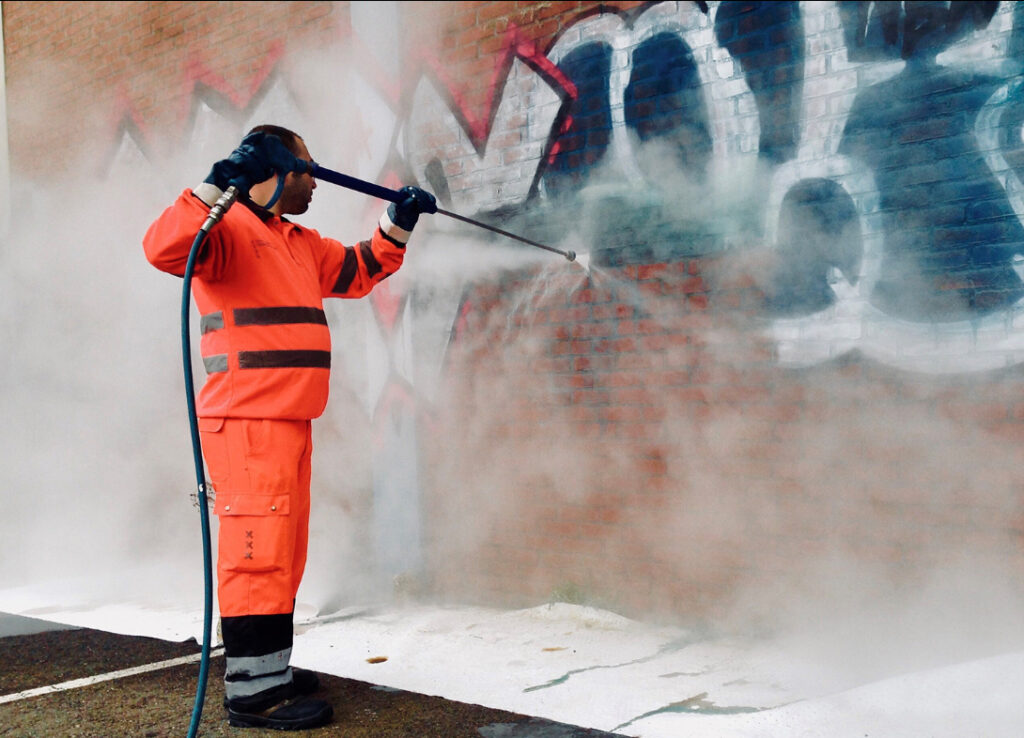Graffiti has long been a subject of heated debate in urban culture. Some view it as an act of vandalism that degrades neighborhoods, while others see it as a form of artistic expression and social commentary. The act of graffiti removal, therefore, is often framed as an attack on creativity and self-expression. However, the reality is far more complex. Graffiti removal is not the enemy of art; rather, it is part of a dynamic conversation about public space, ownership, aesthetics, and community values. In the ever-changing landscape of the big city, graffiti removal plays a role in maintaining a balance between freedom of expression and the collective interests of the public.
The Dual Nature of Graffiti: Vandalism or Art?
Graffiti exists in a gray area between legality and artistic merit. While some pieces are undeniably intricate, thought-provoking, and even beautiful, others are simple tags, gang markings, or crude vandalism that add little to the urban environment. The key issue is that graffiti, by its very nature, is an unsolicited form of artistic expression. Unlike murals or public art installations, which are often commissioned and legally approved, graffiti is created without permission, challenging traditional notions of property rights and city planning.
On one hand, graffiti can be an act of defiance, a form of rebellion against authority, capitalism, or systemic injustices. Street artists such as Banksy, Jean-Michel Basquiat, and Shepard Fairey have elevated graffiti into mainstream recognition, proving that it can carry powerful messages and challenge societal norms. On the other hand, unchecked graffiti can contribute to urban decay, sending signals of disorder and neglect. Many city officials and community members argue that an abundance of graffiti can lead to a perception of lawlessness, lowering property values and discouraging investment in public spaces.
The Role of Graffiti Removal in Urban Life
Graffiti removal is often portrayed as an oppressive force against creativity, yet its role in shaping the cityscape is crucial. It serves multiple purposes, from maintaining cleanliness and public safety to ensuring that public and private property owners have control over their own spaces. Cities and municipalities spend millions of dollars annually on graffiti removal efforts, seeking to strike a balance between preserving the artistic integrity of public spaces and preventing unwanted defacement.
Preserving Community Identity
Graffiti is deeply tied to urban identity, but not all communities want to be defined by it. In some neighborhoods, unauthorized graffiti is perceived as an intrusion rather than a contribution. Business owners, residents, and local governments work to maintain an aesthetic that aligns with their vision of the neighborhood, and graffiti removal allows them to reclaim control over their surroundings. While some murals and street art projects are embraced, unapproved graffiti is often erased to uphold the community’s sense of order and pride.
Discouraging Crime and Disorder
The Broken Windows Theory suggests that visible signs of disorder, including graffiti, can encourage further criminal activity. While this theory is debated, many cities operate on the assumption that reducing graffiti discourages other forms of vandalism and crime. Graffiti removal thus becomes a tool for maintaining a sense of security and order. When cities swiftly remove illegal graffiti, it sends a message that vandalism will not be tolerated, deterring repeat offenders.
Balancing Public and Private Rights
Public spaces belong to everyone, but they also need to be regulated to prevent visual chaos. Graffiti, when placed on private property without consent, is an infringement on ownership rights. Business owners, homeowners, and even government buildings have a vested interest in maintaining their facades. Graffiti removal is not necessarily about silencing artists but about ensuring that property owners have a say in how their spaces are presented.
Encouraging Legal Street Art
Instead of an outright war against graffiti, many cities are shifting toward promoting legal street art through designated spaces, commissioned murals, and public art initiatives. When illegal graffiti is removed, it paves the way for sanctioned, high-quality urban art that contributes to cultural identity without the controversy of property rights violations. Programs that encourage legal graffiti walls or partnerships with artists help turn the conversation away from suppression and toward collaboration.
The Evolving Relationship Between Cities and Graffiti
Many cities have recognized that simply removing graffiti is not enough; they must engage with the artists and communities that produce it. Some urban planners and policymakers have adopted progressive approaches to graffiti management, acknowledging that the presence of street art can enhance a city’s cultural vibrancy when properly integrated.
Legal Graffiti Spaces and Community Projects
Cities such as Berlin, Melbourne, and São Paulo have designated legal graffiti areas where artists can freely create. These spaces not only reduce illegal tagging but also foster a sense of community among street artists. Murals and legal graffiti projects have turned previously neglected areas into tourist attractions and cultural hubs.
Street Art Festivals and Public Art Programs
Cities that once waged a war on graffiti are now hosting street art festivals, inviting renowned graffiti artists to contribute to urban beautification projects. Programs like New York’s 100 Gates Projector London’s Street Art Tours illustrate how street art can be celebrated rather than criminalized. By giving artists legal avenues for expression, these initiatives help bridge the gap between graffiti culture and urban governance.
Technology and Smart Solutions
Advancements in technology have also transformed the way cities handle graffiti. Smart coatings that make graffiti removal easier, community reporting apps, and artificial intelligence tools to track graffiti trends all contribute to more efficient graffiti management. Cities are increasingly using data to understand graffiti hotspots, artist movements, and public sentiment toward different types of street art.
The Future of Graffiti and Public Space
The relationship between graffiti and urban development will continue to evolve as cities find ways to integrate artistic expression into public spaces without sacrificing order. Rather than treating graffiti removal as an adversarial process, urban planners and artists can work together to create a cityscape that respects both creativity and community standards.
Redefining Public Art
One of the biggest shifts in urban planning is the redefinition of public art. Rather than relying solely on traditional commissioned sculptures or murals, cities can adopt more inclusive approaches that recognize street art as a legitimate cultural asset. This means fostering collaboration between graffiti artists, local businesses, and government agencies to determine where and how street art should be integrated.
Education and Outreach
Engaging young artists in legal graffiti programs can help reduce vandalism while encouraging artistic growth. Many cities have started offering workshops, mentorship programs, and grants for emerging street artists. By providing legal avenues for creative expression, graffiti can be channeled into productive, community-driven projects.
Shifting Perceptions of Graffiti Removal
Rather than viewing graffiti removal as an attack on art, it should be seen as a necessary part of urban dialogue. Just as graffiti challenges the status quo, removal efforts reflect the ongoing negotiation between different urban stakeholders. A blank wall today may be a canvas tomorrow, and the cycle of graffiti and removal will continue to shape the city’s visual identity.
Thoughts
Graffiti removal is not the enemy of art; it is part of an ongoing conversation about the city’s identity, public space, and cultural expression. While graffiti can serve as a powerful artistic and political statement, its presence must be balanced against the rights of property owners and the broader community’s interests. Cities that adopt a nuanced approach removing unwanted graffiti while promoting legal street art can foster a more inclusive and vibrant urban environment.
Instead of a battle between artists and authorities, graffiti and its removal should be understood as a dialogue one that reflects the ever-changing nature of the city. By embracing both the need for creative expression and the importance of community standards, cities can ensure that graffiti remains an essential, but regulated, part of urban life.
No comments yet.







